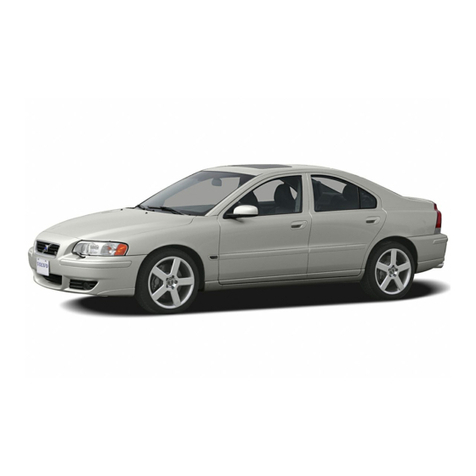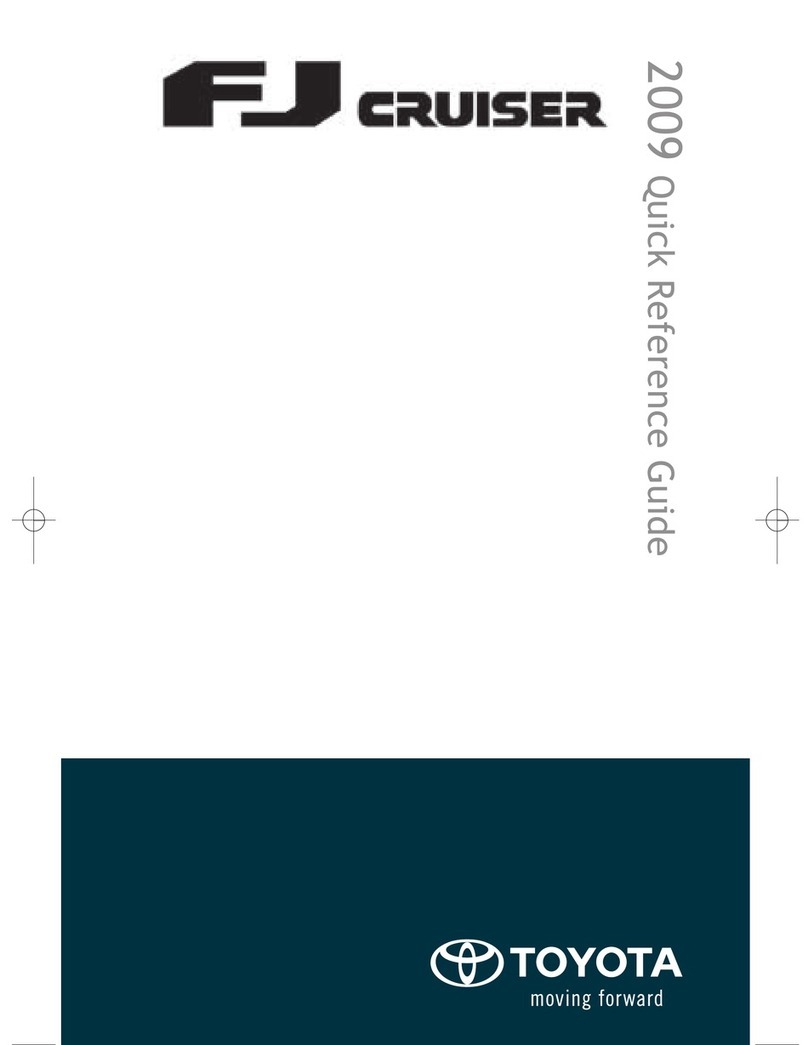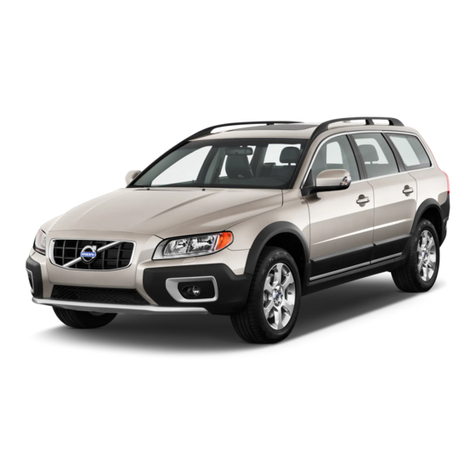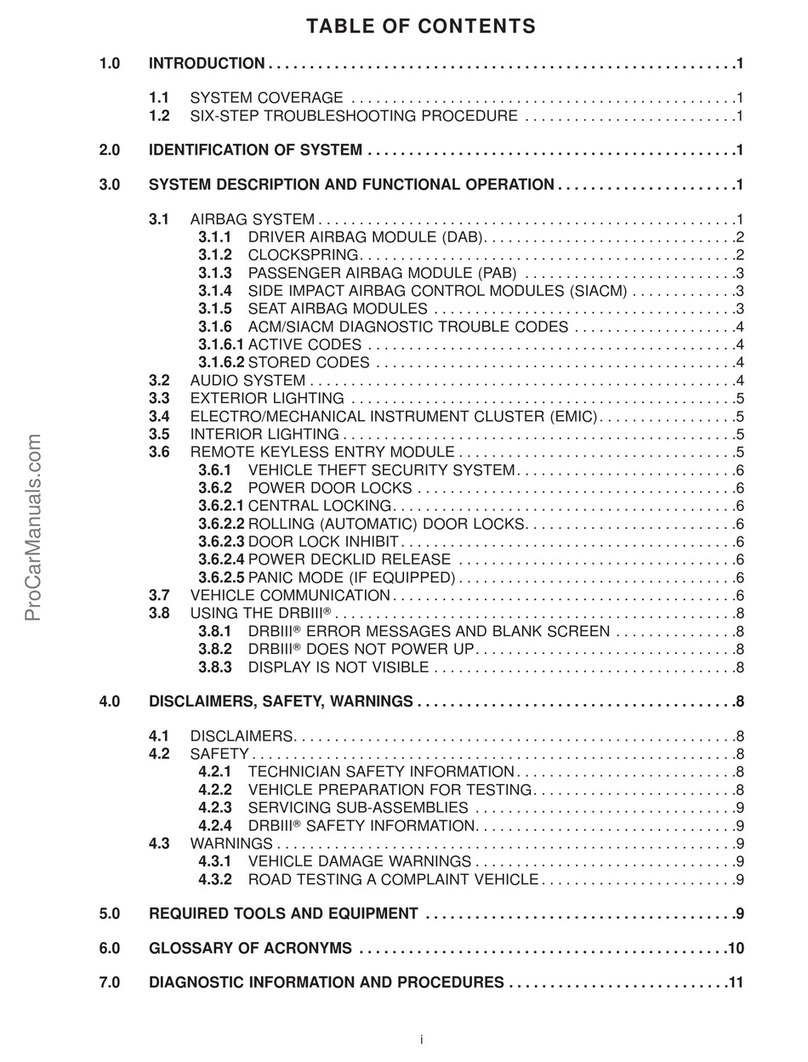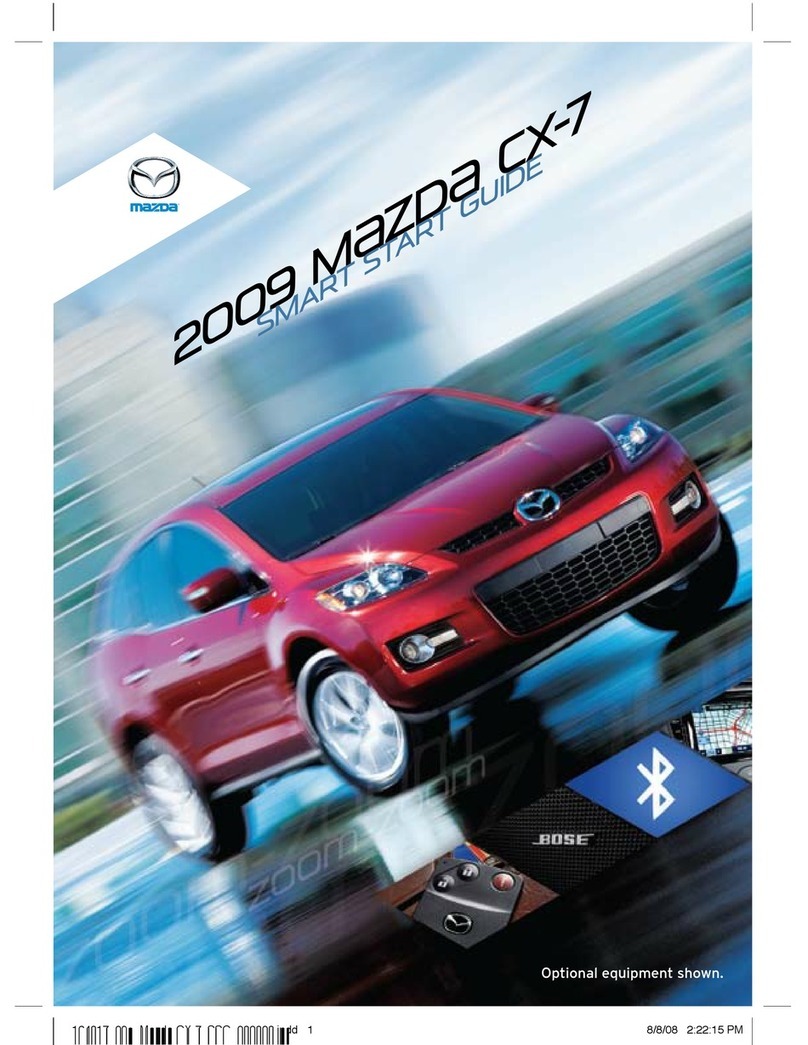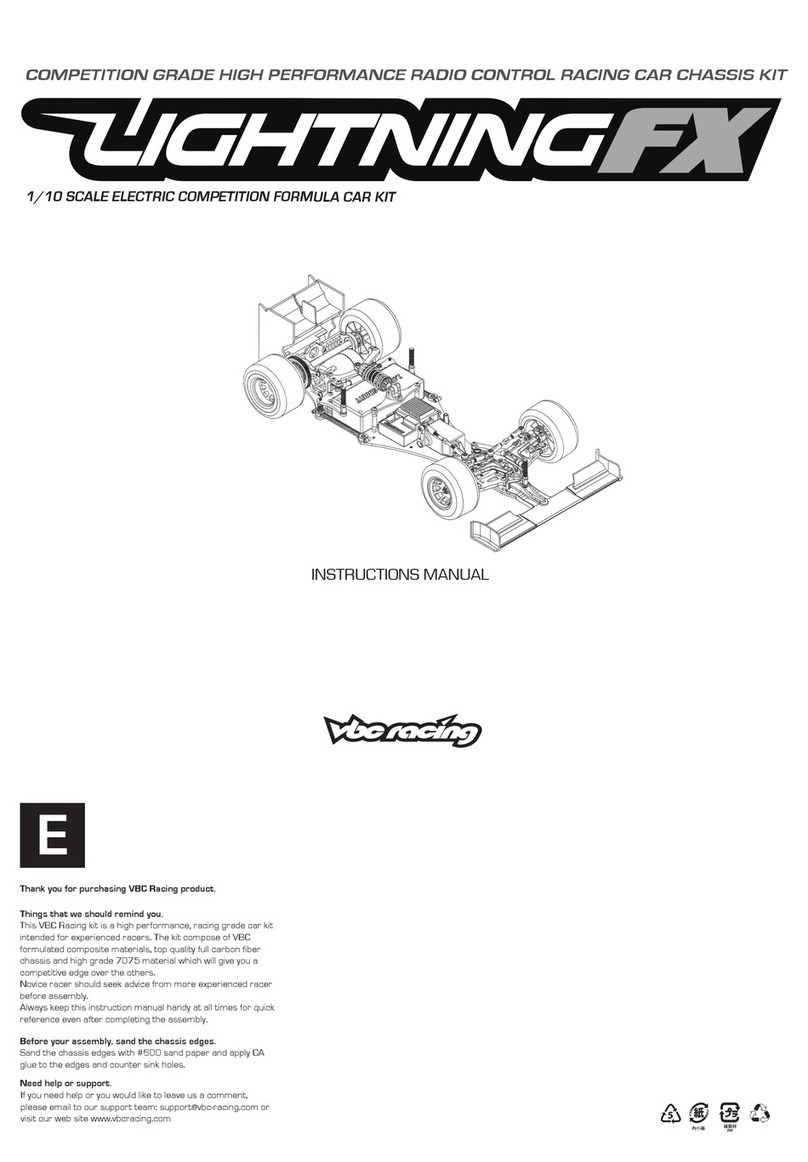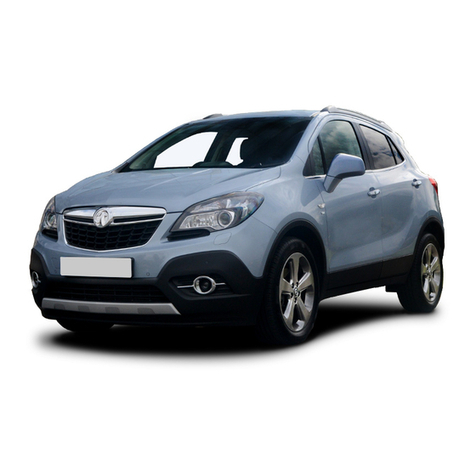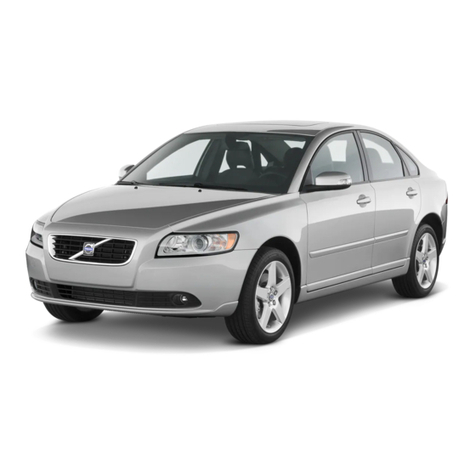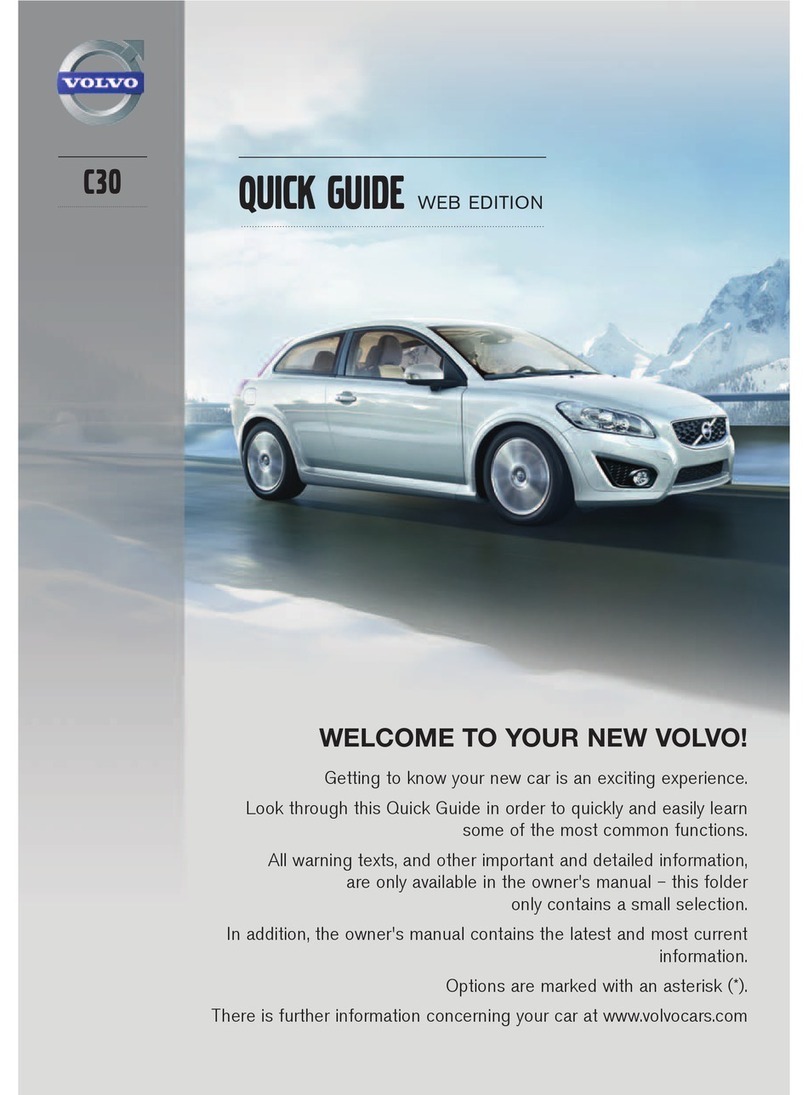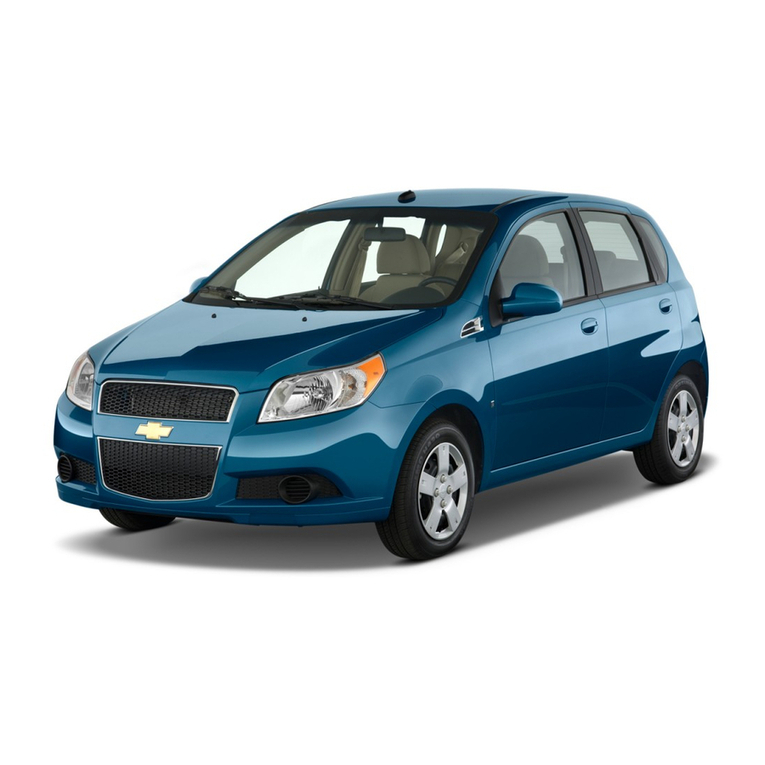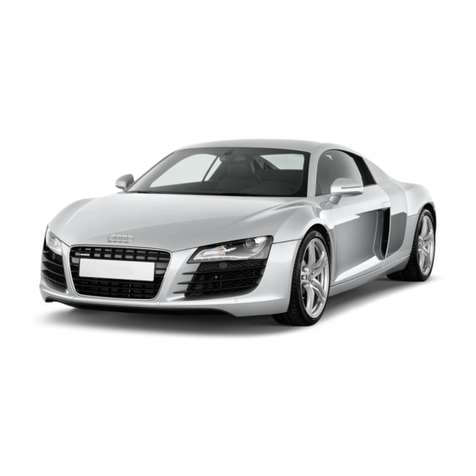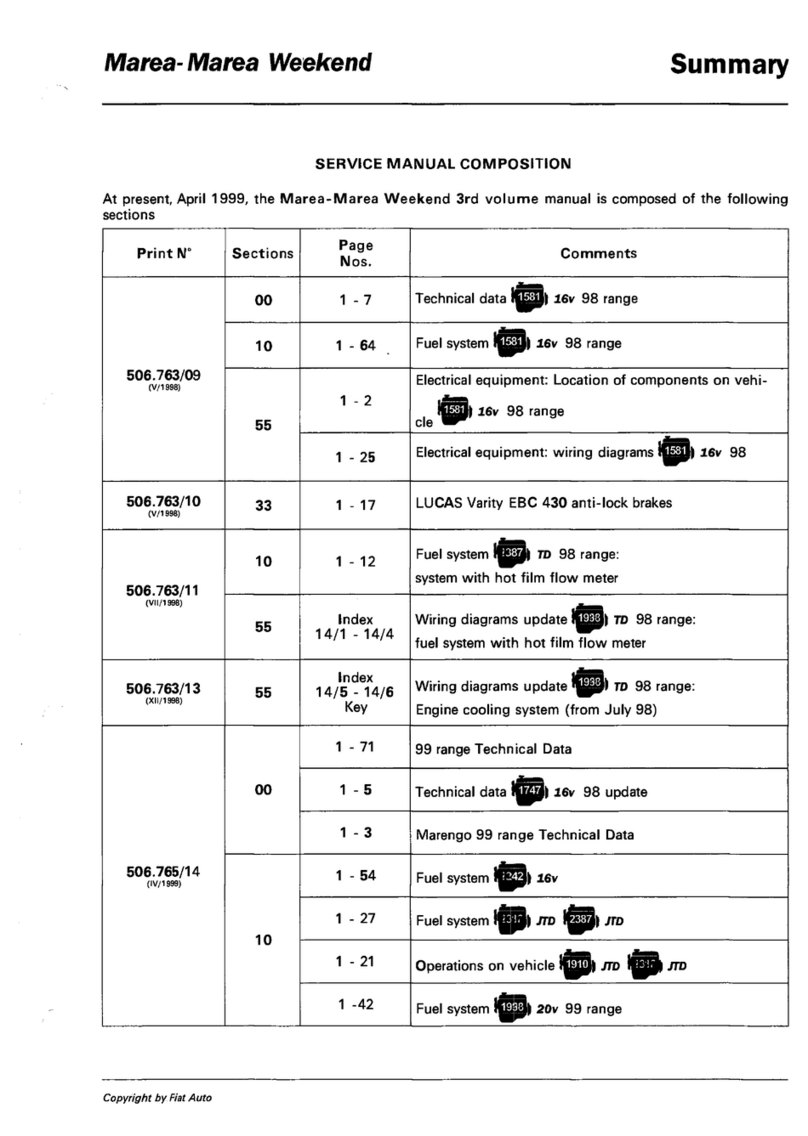Mersedes-Benz 300 D 1992 User manual


What You Should Know
at the Gas Station
See last page
MERCEDES-BENZ
ROADSIDE ASSISTANCE
1-800-222-0100
(U.S.A. onl ) P98-0002-B12
Drive Sensibl - Save Fuel
Fuel consumption, to a great extent,
depends on driving habits and operat
ing conditions.
To save fuel ou should:
• keep tires at the recommended
inflation pressures,
• remove unnecessar loads,
• remove ski racks or roof-mounted
luggage racks when not in use,
• allow engine to warm up under low
load use,
• avoid frequent acceleration and
deceleration,
• have all maintenance work
performed at regular intervals b an
authorized Mercedes-Benz dealer.
Fuel consumption is also increased
b driving in cold weather, in
stop-and-go traffic, on short trips and in
hill countr .

Mercedes-Benz
Owner’s Manual
1992
300 D 2.5 TURBO

Kindly observe the following in your own best interests:
We recommend using Mercedes-Benz original parts as
well as conversion parts and accessories e plicitly approved
by us for your vehicle model.
We have subjected these parts to a special test in which
their reliability, safety and their special suitability for
Mercedes-Benz vehicles have been determined.
We are unable to make an assessment for other products
and therefore cannot be held responsible for them, even if in
individual cases an official approval or authorization by
governmental or approval agencies should e ist.
Mercedes-Benz original parts as well as conversion parts
and accessories approved by us are available at your
Mercedes-Benz service station where you will receive
comprehensive information, also on permissible technical
modifications, and where e pert installation will be
performed.
Printed in Germany
We reserve the right to modif the technical details of the vehicle as given in the data
and illustrations of this Owner's Manual. Reprinting, translation and cop ing, even
of excerpts, is not permitted without our prior authorization in writing.
VP/P 03.05.91 RS 5PVL

Our company and staff congratulate you on the
purchase of your new Mercedes-Benz.
Your selection of our product is a demonstration of your
trust in our company name. Further, it e emplifies your
desire to own an automobile that will be as easy as
possible to operate and provide years of service.
Your Mercedes-Benz represents the efforts of many
skilled engineers and craftsmen. To ensure your
pleasure of ownership, we ask you to make a small
investment of your time:
• Please read this manual carefully before putting it
aside.
• Please abide by the recommendations contained in
this manual. They are designed to acquaint you with
the operation of your Mercedes-Benz.
We e tend our best wishes for many miles of safe,
pleasurable driving.
Mercedes-Benz Aktiengesellschaft
3

ntroduction
This Owner’s Manual contains a great deal of useful
information. We urge ou to read it carefull and
familiarize ourself with the vehicle before driving.
For our own safet and longer service life of the
vehicle, we urge ou to follow the instructions and
warnings. Ignoring them could result in damage to
the vehicle or personal injur .
Your vehicle ma have some or all of the equipment
described. Therefore, ou ma find explanations of
equipment not installed in our vehicle. If ou have
an questions about the operation of an equip
ment, our authorized Mercedes-Benz dealer will be
glad to demonstrate the proper procedures.
Owner’s Service and Warranty Policy
The Owner’s Service and Warrant Polic Booklet
contains detailed information about the warranties
covering our Mercedes-Benz, including:
• New Car Limited Warrant
• Emission S stem Warrant
• Emission Performance Warrant
• California Emission Control S stem
Warrant (California Onl )
• State Warrant Enforcement Laws
(Lemon Laws)
4
mportant Notice for California Retail Buyers of
Mercedes-Benz Automobiles
Under California law ou ma be entitled to a
replacement of our vehicle or a refund of the
purchase price, if Mercedes-Benz of North America,
Inc. or its authorized dealer fails to conform the
vehicle to its express warranties after a reasonable
number of repair attempts during the period of one
ear or 12 000 miles from original deliver of the
vehicle. A reasonable number of repair attempts is
presumed for a retail bu er (1) if the vehicle is out
of service b reason of repair of substantial non
conformities for a cumulative total of more than
30 calendar da s or (2) the same substantial non
conformit has been subject to repair four or more
times and you have at least once directly notified
us in writing of the need to repair the non-con
formity and have given us an opportunity to per
form the repair ourselves. Notifications should
be sent to the nearest Mercedes-Benz Regional
Office listed in the Owner’s Service and Warran
ty nformation Booklet.

Maintenance
The Maintenance Booklet describes all the
necessar maintenance work which should be
performed at regular intervals.
Alwa s have the Maintenance Booklet with ou
when ou take the vehicle to our authorized
Mercedes-Benz dealer for service. The service
advisor will record each service in the booklet for
ou.
Roadside Assistance
The Mercedes-Benz Roadside Assistance Program
provides factor trained technical help in the event
of a breakdown. Calls to the toll-free Roadside
Assistance number
1-800-222-0100 (in the U.S.A. only)
will be answered b Mercedes-Benz Customer
Assistance Representatives 24 hours a da ,
365 da s a ear.
On-site service calls b a local Mercedes-Benz
Roadside Assistance technician are available week
da s from 5:00 PM till midnight, weekends and
legal holida s from 8:00 AM till midnight.
For additional information refer to the Mercedes-
Benz Roadside Assistance Program brochure in
our glove box or lockable storage compartment.
Change of Address or Ownership
If ou change our address, be sure to send in the
’’Change of Address Notice” found in the Owner’s
Service and Warrant Polic Booklet. It is in our
own interest that we can contact ou should the
need arise.
If ou sell our Mercedes-Benz, please leave all
owner’s literature with the vehicle to make it
available to the next owner.
If ou bought this vehicle used, be sure to send in
the ’’Notice of Purchase of Used Car” found in the
Owner’s Service and Warrant Polic Booklet.
Operating Your Vehicle Outside the U.S.A. or
Canada
If ou plan to operate our vehicle in foreign
countries, please be aware that service facilities or
replacement parts ma not be readil available.
Certain Mercedes-Benz models are available for
deliver in Europe under our European Deliver
Program. For details, consult our authorized
Mercedes-Benz dealer or write to:
Mercedes-Benz of North America, Inc.
European Deliver Department
One Mercedes Drive
Montvale, NJ 07645
In Canada write to:
Mercedes-Benz Canada, Inc.
European Deliver Department
849 Eglinton Avenue East
Toronto, Ontario M4G 2L5
5

We continuously strive to improve our product, and ask
for your understanding that we reserve the right to make
changes in design and equipment. Therefore, information,
illustrations and descriptions in this Owner’s Manual might
differ from your vehicle.
Optional equipment is also described in this manual,
including operating instructions wherever necessary.
Since they are special-order items, the descriptions and
illustrations herein may vary slightly from the actual
equipment of your vehicle.
If there are any equipment details that are not shown or
described in this Owner’s Manual, your authorized
Mercedes-Benz dealer will be glad to inform you of
correct care and operating procedures.
The Owner’s Manual and Maintenance Booklet are impor
tant documents and should be kept with the vehicle.
6

nstruments and Controls
Starting the Engine, Driving nstructions
Operation
Driving
Practical Hints
Technical Data
Fuels, Coolants, Lubricants etc.
Consumer nformation
ndex

The First 1000 Miles
(1500 km)
The more cautiousl ou treat our
vehicle during the break-in period,
the more satisfied ou will be with
its performance later on. There
fore, drive our vehicle during the
first 1000 miles (1500 km) at
moderate vehicle and engine
speeds.
During this period, avoid heav
loads (full throttle driving) and high
RPM (no more than 2/3 of maxi
mum permissible speed in each
gear as indicated on the
speedometer).
Avoid accelerating b kickdown. It
is not recommended to brake the
vehicle b manuall shifting to a
lower gear. We recommend to
select positions ” 3” or ”2” onl at
moderate speeds (for hill driving).
After 1000 miles (1500 km)
speeds ma graduall be in
creased to the permissible
maximum.
Check Regularly and
Before a Long Trip
See Index
Maintenance
We strongl recommend that ou
have our vehicle serviced b our
authorized Mercedes-Benz dealer,
in accordance with the Mainte
nance Booklet.
8

nstruments and Controls
Starting the Engine, Driving nstructions
Instruments and Controls 10
Instrument Cluster 12
Indicator Lamp S mbols 13
Starting and Turning Off the
Engine 14
Driving Instructions 15

nstruments and Controls
For more detailed descriptions see Inde .
1 Adjustable side air outlets
2 Exterior lamp switch
3 Parking brake release
4 Hood lock release
5 Parking brake pedal
6 Combination switch
7 Air volume control for side air outlets
8 Cruise control
9 Instrument cluster
10 Horn, airbag
11 Steering lock with preglow/starter switch
12 Adjustable center air outlets
13 Air volume control for center air outlets
14 Glove box (illuminated in steering lock posi
tions 1 or 2) is not installed in vehicles
equipped with a front passenger airbag
10
15 Rear window defroster switch
16 Switch for folding rear seat head restraints
backward
17 Switch for rear window sunshade
18 Air recirculation switch
19 Hazard warning flasher switch
20 Rear passenger compartment lamp switch
21 Automatic climate control
22 Radio
23 Ashtra with lighter
24 Left front seat heater switch
25 Right front seat heater switch
26 Left power window switch group
27 Adjusting switch for exterior mirror on front
passenger side
28 Loudspeaker front to rear fader control
29 Right power window switch group

P68-0034-B37A
26 0' • 27 28 29
I
11
Instruments and Controls

P54-0011-B34A
nstrument Cluster
1 Coolant temperature gauge. See Index.
2 Fuel gauge with reserve warning lamp ( ellow).
See Index.
3 Oil pressure gauge (bar). See Index.
4 Turn signal indicator lamp, left (green)
5 Knob for instrument lamps and trip odometer
Rotate knob: to var intensit of instrument lamps
Depress knob: to reset trip odometer
6 Speedometer
7ASD function indicator lamp ( ellow).
See Index.
8Main odometer
9Trip odometer
10 Outside temperature indicator. See Index.
11 Turn signal indicator lamp, right (green)
12 Knob for clock adjustment
(press in and rotate for adjustments)
13 Electric clock
14 Tachometer
12

ndicator Lamp Symbols
Function ndicator Lamp
High beam
Preglow. See Index.
Warning Lamps
(should go out with the engine running unless)
Batter not being charged.
See Index.
Brake fluid low (except Canada).
Parking brake engaged.
See Index.
Brake fluid low (Canada onl ).
Parking brake engaged.
See Index.
Front brake pads worn down.
See Index.
(®)
BRAKE
D
Engine oil level low.
See Index.
Coolant level low.
See Index.
Fluid level for windshield and head
lamp washer s stem low.
See Index.
Exterior lamp failure.
See Index.
ABS malfunction.
See Index.
SRS malfunction.
See Index.
ASD malfunction.
See Index.
13
Instrument Cluster
Indicator Lamp S mbols

Starting and Turning Off the
Engine
Before Starting
Engage parking brake and move
the selector lever to position ” P” .
Cold Engine
Turn ke to steering lock posi
tion 2. Charge indicator and pre
glow indicator lamp should come
on. The preglow process starts.
When the preglow indicator lamp
goes out, the engine is read for
starting.
Ambient temperatures
above + 14°F (-10°C):
Do not depress accelerator. Turn
ke in steering lock clockwise to
the stop. Release ke onl when
the engine is firing regularl .
Ambient temperatures
below + 14°F (-10°C):
Depress accelerator part . Turn
ke in steering lock clockwise to
the stop. Release ke onl when
the engine is firing regularl and
back off accelerator slowl .
Do not interrupt the starting pro
cess. If the engine is ver cold, it
is possible that it will fail to start
on subsequent attempts.
At ambient temperatures below
0°F (-18°C), depress accelerator
three times prior to starting.
Hot Engine
Turn ke in steering lock clock
wise to the stop and start engine
immediatel without depressing
the accelerator.
Turning off
Turn the ke in the steering lock to
position 0 onl when the vehicle
has stopped moving.
The ke can onl be removed with
the selector lever in position ”P” .
Should the engine continue to
operate with the ke in steering
lock position 0, refer to Turning Off
Engine Manually, see Index.
If the coolant temperature is ver
high (e.g. after hard driving on
mountain roads), do not shut off
the engine immediatel , allow it to
run for 1-2 minutes at increased
idle speed with selector lever in
position ”P” .
mportant!
Due to the installed starter non
repeat feature, the ke must be
turned completel to the left before
attempting to start the engine
again.
Observe the oil pressure gauge
immediatel after starting the en
gine. In a ver cold engine the oil
pressure will rise slowl . Do not
speed up the engine before pres
sure is registered on the pressure
gauge.
The batter charge indicator lamp
should go out as soon as the
engine has started.
If the preglow indicator lamp fails
to light up, or lights up while driv
ing, the preglow s stem is defec
tive and should be repaired at
our authorized Mercedes-Benz
dealer at the earliest possible
date.
The engine is equipped with a
block heater to provide reliable
starting at temperatures below
0°F (-18°C). Refer to Winter
Driving, see Index.
14

Driving nstructions
Power assistance
When the engine is not running,
the brake and steering s stems
are without power assistance.
Under these circumstances, a
much greater effort is necessar to
stop or steer the vehicle.
Brakes
Caution!
When driving down long and steep
grades, relieve the load on the
brakes b shifting into ”3” or ”2” .
This helps prevent overheating of
the brakes and reduces brake pad
wear. Do not exceed engine speed
limits (see Index).
After hard braking it is advisable
to drive on for some time so the
air stream will cool down the
brakes faster.
Warning!
After driving in heavy rain for
some time without applying
the brakes or through water
deep enoug to wet brake
components, the first braking
action may be somewhat
reduced and increased pedal
pressure may be necessary.
Be sure to maintain a safe
distance from vehicles in
front.
The condition of the parking brake
s stem is checked each time the
car is in the shop for the required
maintenance.
Between maintenance checks, it is
a good practice to appl the park- g> <■
ing brake once or twice while driv- ~ c
ing at approximatel 30 mph
(50 km/h) on a dr straight road.
Appl brake lightl until a slight
drag on the wheels is felt. Keep
appl ing brake for about 10 se
conds while pulling the release
handle out before releasing the
parking brake completel . This
practice will keep the parking
brake at maximum efficienc .
I
15

Warning!
The stop lamps will not come
on when applying the parking
brake only. Perform the proce
dure in the previous paragraph
only when the road is clear of
other traffic.
Resting your foot on the brake
pedal will cause excessive and
premature wear of the brake
pads.
t can also result in the brakes
overheating thereby signifi
cantly reducing their effective
ness. t may not be possible to
stop the car in sufficient time
to avoid an accident.
All checks and maintenance work
on the brake s stem should be
carried out b an authorized
Mercedes-Benz dealer.
If the parking brake is released
and the brake warning lamp in the
instrument cluster sta s on, the
brake fluid level in the reservoir is
too low.
Brake pad wear or a leak in the
s stem ma be the reason for low
brake fluid in the reservoir.
Have the brake s stem inspected
at an authorized Mercedes-Benz
dealer immediatel .
Install onl brake pads and brake
fluid recommended b Mercedes-
Benz.
Warning!
f other than recommended
brake pads are installed, the
braking properties of the ve
hicle can be affected to an ex
tent that the safety is substan
tially impaired.
Tires
Tread wear indicators (TWI) are
required b law. These indicators
are located in six places on the
tread circumference and become
visible at a depth of approximatel
1 / 16 in (2 mm), at which point the
tire is considered worn and should
be replaced.
The tread wear indicator appears
as a solid band across the tread.
16

Warning!
Do not allow your tires to wear
down too far. With less than
1/8 in (3 mm) of tread, the
adhesion properties on a wet
road are sharply reduced.
Depending upon the weather
and/or road surface (condi
tions), the tire traction varies
widely.
Specified tire pressures must be
maintained. This applies particu
larl if the tires are subjected to
high loads (e.g. high speeds,
heav loads, high ambient tem
peratures).
Aquaplaning
Depending on the depth of the
water la er on the road, aquaplan
ing ma occur, even at low speeds
and with new tires. Avoid track
grooves in the road and appl
brakes cautiousl in the rain.
Tire traction
The safe speed on a wet, snow
covered or ic road is alwa s low
er than on a dr road.
You should pa particular attention
to the condition of the road as
soon as the prevailing tempera
tures fall close to the freezing
point.
Warning!
f ice has formed on the road,
tire traction will be substan
tially reduced. Under such
weather conditions, drive,
steer and brake with extreme
caution.
We recommend M + S radial-pl
tires for the winter season for all
four wheels to insure normal bal
anced handling characteristics. On
packed snow, the can reduce
our stopping distance as com
pared with summer tires. Stopping
distance, however, is still consi
derabl greater than when the
road is wet or dr .
I
Warning!
Do not drive with a flat tire.
A flat tire affects the ability to
steer or brake the vehicle. You
may lose control of the car.
Continued driving with a flat
tire or driving at high speed
with a flat tire will cause ex
cessive heat build-up and
possibly a fire, or tire blowout.
17
Driving Instructions

Parking
Warning!
To reduce the risk of personal
injury as a result of vehicle
movement, before turning off
the engine and leaving the
vehicle always:
1. Keep foot on brake pedal.
2. Firmly depress parking
brake pedal.
3. Move the selector lever to
position ”P”.
4. Slowly release brake pedal.
5. Turn front wheels towards
to road curb.
6. Turn the key to steering
lock position 0 and remove.
mportant!
It is advisable to set the parking
brake whenever parking or leaving
the vehicle. In addition, move
selector lever to position ”P” .
When parking on hills, alwa s
appl the parking brake.
Winter Driving nstructions
The most important rule for slip
per or ic roads is to drive sen
sibl and to avoid abrupt acce
leration, braking and steering
action. Do not use the cruise
control s stem under such
conditions.
When the vehicle is in danger of
skidding, move selector lever to
position ” N”. Tr to keep the
vehicle under control b means of
corrective steering action.
Road salts and chemicals can
adversel affect braking efficienc .
Increased pedal force ma be
come necessar to produce the
normal brake effect. We therefore
recommend depressing the brake
pedal repeatedl when traveling
on saltstrewn roads at length. This
can bring road salt impaired brak
ing efficienc back to normal. A
prerequisite is, however, that this
is possible without endangering
other drivers on the road.
If the vehicle is parked after being
driven on salt treated roads, the
braking efficienc should be tested
as soon as possible after driving is
resumed while observing the safe
t rules in the previous paragraph.
Warning!
f the vehicle becomes stuck in
snow, make sure that snow is
kept clear ot the exhaust pipe
and from around the vehicle
with engine running.
Otherwise, deadly carbon
monoxide (CO) gases may
enter vehicle interior resulting
in unconciousness and death.
To assure sufficient fresh air
ventilation, open a window
sligthly on the side of the car
that is out of the wind.
18
Table of contents
Other Mersedes-Benz Automobile manuals

